Course:FNH200/2013w Team08 Tea
TEA
INTRODUCTION
After water, tea is the most consumed liquid in the world (Tea Association, 2013). Tea’s origins can be followed back to it’s beginning in China where it was consumed for it’s medicinal benefits and thereafter it was spread across the world to different countries who adapted the Chinese style to make it their own. Each country and culture has a unique way of processing, brewing and consuming this diverse drink in a way that suits their unique lifestyles and tastes.
How the tea leaves are processed (dried, roasted, oxidized or fermented) will determine the style of tea created (white, green, oolong or black). Each diverse style requires very specific brewing temperatures and steeping times to ensure the optimum flavour is achieved.
Although tea is not successfully grown in Canada, there are laws and regulations that govern requirements for tea imported into the Country that help protect both consumers and the environment.
TEA HISTORY
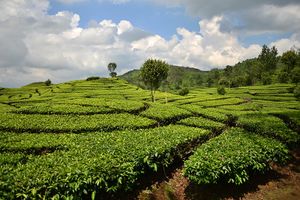
The history of tea can be traced back to the Shang Dynasty of China. The earliest credible record of tea drinking dates back to the third century A.D. in a medical text written by the Chinese Physician Hua Tuo. It was thought to have originated as a medicinal drink in the Chinese province Yunnan between 1500-1046 B.C. Although this is the earliest recorded document, each region has their own tea history from which their current tea culture has evolved. In Hong Kong they enjoy milk tea (black tea and condensed milk) whereas in southern China yum cha culture dominates (drinking tea with dim sum) (The History of Tea, 2014).
When Japanese priests and envoys were sent to China to learn about its culture in the sixth century they discovered tea and brought it back with them to Japan. This is when tea consumption spread into the country and became the popular drink in religious circles. They then started importing tea seeds from China and cultivating them in Japan. The Japanese Sencha style tea (literally meaning roasted tea) was developed in 1738 by Soen Nagatani. It is the unfermented form of green tea that is the most popular form of tea in Japan today (Williams, 2012) .
During the Joseon Dynasty in Korea the “Day Tea Rite” tea style was developed. It was a common daytime ceremony, where they used heavily pressed cakes of black tea but over time the Buddhist monks started importing tea, bringing a more delicate series of teas into the country (Daebak Tea, 2014).
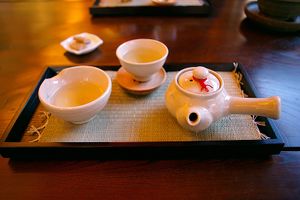
During the 1600’s tea consumption became popular in Europe and the American Colonies. It actually played a pivotal role in the American Revolution. When the British Government put a tax on the transportation and sale of tea the colonists refused to have it removed from the ships. As a result, one night a few of the colonists dressed as Native Americans, snuck on the ship and threw over 300 cases of tea into the water. Consequently the famous Boston Tea Party was named and the Revolutionary War began (Tea Association, 2013).
Today, tea is consumed around the globe in it’s many different forms. Many cultures drink it ceremonially, others consume it habitually and some just consume it periodically for pleasure or for some of it’s potential medicinal qualities such as its ability to improve heart health, reduce cancer and increase metabolism.
TYPES OF TEA
White, green, oolong and black tea all come from the warm-weather evergreen called Camellia sinensis. The differences observed in these types of tea come from a range of processing methods and the degree to which they are oxidized (Tea Association, 2013).
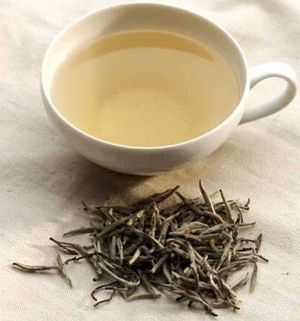
White Teas
White tea is the purest and least processed of all teas. Historically most of the tea was from the Fuljian and Zhejiang province but today it has spread to parts of Thailand, Taiwan, and India. The tea utilizes both the leaves and the buds of the plant and before they are processed, they are dried in the natural sunlight to prevent oxidation or any additional processing. This loose leaf tea brews a light color and flavor and gets its name from the little silverish white spikes on the unopened buds of the plant; the beverage itself is not white instead it is a very faint yellow (Hilal & Engelhardt, 2007).

Green Teas
Once green tea is picked, it is dried for 2 or 3 hours to remove some of the excess moisture. It then gets steamed, rolled and dried to produce the final green tea product. It undergoes minimal oxidation during the processing stage; which gives the final product its distinct green color (Tea Vivre, 2013).
Over the years, green tea has slowly started growing in popularity due to research and publicity about its medicinal benefits. It is now being added to dietary supplements, health foods, beverages, and even cosmetics. Green tea’s properties are highly variable depending on the region of growth, processing, harvesting season, and the general horticulture of the tea plants (University of Maryland, 2013).

Oolong Teas
Oolong means “black dragon” in chinese and is also known as wu long tea. The majority of the oolong tea requires special cultivares to produce its distinct and diverse flavours. There are many types of oolong tea, and are named depending on the province it is from. Oolong tea can give off a variety of aromas including woody, roasted, fresh, honey, or fruity depending on the region the leaves are picked, the horticulture and style of processing and production (Goodness, n.d.).
Most people commonly recognize oolong tea as the Chinese tea served in Chinese restaurants. Traditional oolong tea is made by a process called “wrap-curling” into beads with tails - refer to the picture. It is initially oxidized overnight, then wrapped tightly before the leaves are heat dried to halt oxidation (Peony, 2012).
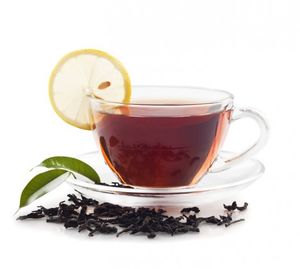
Black Teas
Black tea is a type of tea that is more oxidized than oolong, green and white teas(Yee, 1996). Black tea is generally stronger in flavor than the less oxidized teas. In other cultures such as Korea, Japan, and Portugal the tea is named “red tea” from the colour of the liquid; in Western culture, the “black tea” refers to the appearance of the tea leaf itself. Unlike other teas such as green tea, black tea is able to sustain the taste and quality for a long duration due to its prolonged oxidation process, making black tea account for over ninety percent of all the teas sold in the west (Teas and Thes, 2013)
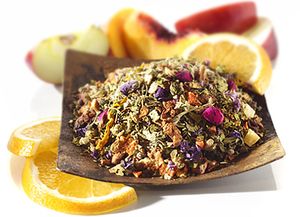
Herbal Teas
Herbal tea does not contain any leaves from the Camellia plant family, so it is sometimes referred to as a tisane which originates from the Greek word ptisane, meaning a drink made from pearl barley. Herbal teas can be broken into three categories: rooibos teas, mate teas, and herbal infusions. Mate tea is considered the coffee lover’s favourite because the twigs from the yerba mate plant from which it is made, taste like coffee. Rooibos tea is made from a South African red bush; the plant is a broom-like member of the legume family (Ausbrooks, 2012). Herbal Infusion is an umbrella term for teas that are made from all kinds of fruits and other plants that are processed through oxidization and tea processing. Herbal tea is any beverage that involves the infusion or decoction of different types of herbs or plants in water. Many herbal teas are consumed for medical benefits (Tea Temptations, 2013)
TEA PROCESSING
Tea processing leads to different types of tea with distinct taste, colour and fragrance.
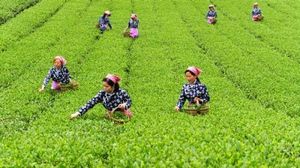
Plucking
Machines can be used to collect tea leaves. However, hand-picked leaves are higher in quality because machines can be too damaging for the leaves. There are two main harvesting season for tea leaves; spring and early summer. (Fuller, 2007). First flush is between March and April; teas collected during this season give off light and floral aroma. During the second flush, which is in May and June, tea leaves are smooth, mature and fruity. Autumnal teas are collected during November and December. These teas often release dark and deep aroma. Fine plucking refers to when two leaves and a bud are collected. Coarse plucking is when three to four leaves and a bud are picked (Nathmull , n.d.). Natural scents of tea leaves are strongest before sunrise (Ineeka, 2014)
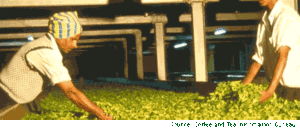
Shrivelling/Withering
Shrivelling, also known as, withering process is when extra moisture content of tea leaves is removed. Shrivelling is carried under cool temperature in breezy rooms to promote slight enzymatic oxidation. (Ineeka, 2014). In the room where shrivelling occurs, fans are installed to create flow of air around the room. Shrivelling process takes around 18 hours to a day. After shrivelling, leaves are ready to be rolled without breaking apart. (Nathmull , n.d. ). The moisture content of the tea leaves are decreased by approximately 10%, depending on the tea manufacturer.
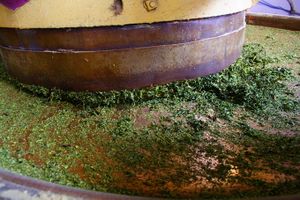
Rolling
Rolling the leaves extracts the remaining juices and gives shape to the leaves. Rolling enhances the taste of the leaves when essential oils and juices are released (Ineeka, 2014). Leaves are rolled between two metal plates under slight pressure. This results in twisting of the leaves. (Nathmull, n.d. )
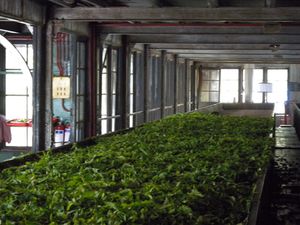
Fermentation/oxidation
Atmosphere and length of fermentation process are the key factors in determining flavour and quality. Leaves are laid out in cold and humid atmosphere. During fermentation, colour of tea leaves change from green to a copper colour, as oxygen reacts with the cell tissues (Fuller, 2007). Fermentation and oxidation refers to the same process and they are used interchangeably. Leaves are left in climate-controlled room. Green teas are not oxidized, keeping most important polyphenols and antioxidants. (Ineeka, 2014).
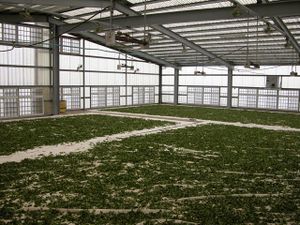
Drying
During the drying stage, tea leaves are dried with hot air and further colour changes are developed from copper to brown or black (Fuller, 2007). When leaves are heated to a hot temperature, oxidation process stops. This keeps the natural flavours until the leaves are brewed. Drying is important for producing various flavours of green tea. (Ineeka, 2014).
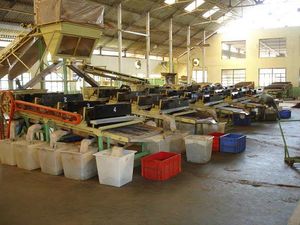
Sorting
Tea leaves are sorted according to size and grade (Fuller, 2007). Some companies use sorting machines. Tea leaves are passed through a vibrating wire mesh, so that different size leaves fall at different places, completing the sorting process (Ineeka, 2014).
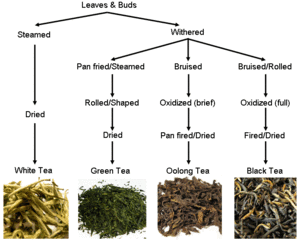
TEA BREWING
Tea Brewing Instruction
1. Measure the desired amount of tea leaves and place into a teapot or teacup. Each type of tea has a specific amount Bagged tea is also commonly used
2. Bring the water to a rolling boil.
3. Add enough hot water to submerge the tea leaves and let it sit for a few seconds before pouring out the water. Warming the tea leaves and teaware allow for a better brew.
4. Add boiling water and let the tea leaves steep
(Enjoying Tea, 2013)
Tea Brewing Times and Temperatures
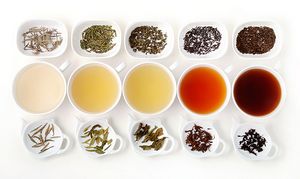
White tea: 2-3 min. 75° – 85°C
Green tea: 2-3 min. 68° – 80°C
Oolong tea: 2-3 min. 85° – 90°C
Black tea: 3-5 min. 95° – 100°C
Herbal tea: 3-5 min. 95° – 100°C
(Chef’s Choice, 2013)
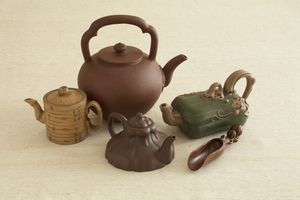
For the Best Tea
- The fresher the water the better, such as filtered or bottled spring water. The increased oxygen can enhance the taste of the tea. Hot tap water/lengthy boiled water can result in flat tasting tea and are not recommended (The Fragrant Leaf, 2012).
- Heating the pot of cup that will be used to steep the tea is helpful in extracting full flavour. This can be done by adding a small amount of boiling water to the pot or cup (The Fragrant Leaf, 2012).
- A popular teapot that is considered the best is the Yixing teapot from China. Made from clay, it can withstand high temperatures and is slow to conduct heat, which makes it cool to touch even while pouring. Apparently over years of use, an unglazed clay teapot can absorb flavor and aroma from tea leaves, and eventually you are able to just pour hot water inside to brew tea (Enjoying Tea, 2013).
- For a stronger tea, add more tea leaves rather than more steeping time (Teavana, 2014).
TEA PACKAGING
Because tea has undergone some degree of dehydration it is quite hygroscopic and thus requires packaging that protects it from moisture, light and oxygen. Tea packaging is highly variable as it is offered both in looseleaf and single serve package formats.
Loose-leaf Packaging
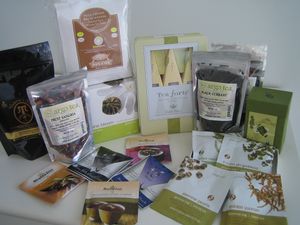
A variety of stand up pouches made from plastic, and foils are very common but tin can varieties are also being used in the market. All of these options are effective in preserving the tea and some manufactures also vacuum-pack for added freshness. Tea manufacturers choose an option based on the cost and ability to present an appealing package that promotes the desired company and product image (Pack Plus, 2014).
Single Serve Packaging

Tea bags are a packaging option that provides customers with a single serving of tea.
Envelopes of tea are usually made of paper and contain small broken pieces of the tea leaves. These small pieces of tea are considered to produce a lesser quality tea because the larger surface area results in increase air exposure which results in more rapid staling. Another factor contributing to reduced quality in this format is due to flattened sacs inability to allow for appropriate aeration during steeping.
In order to mitigate these negative aspects of tea envelopes, some tea manufacturers have started using a newer packaging method called a tea pyramid which allows for more movement of the tea leaves and better aeration (Pack Plus, 2014).
REGULATIONS
Canada does not grow tea; however, many Canadian companies import tea and process it before reselling it domestically and abroad. Health Canada is responsible for creating standards for the safety and quality of tea sold in Canada; while the Canadian Food Inspection Agency (CFIA) is responsible for regulating these standards, as well as regulating packaging, labeling and advertising (Agriculture and Agri-Food Canada, 2010).
Health Claims
Health claims can be made when a relationship exists between ingestion of a food and health. They are regulated by the Food and Drugs Act, and cannot use any false or misleading product information for promotion. Thus green tea can be classified as either a food (in tea form) or natural health product (in tablet or pill form) (Agriculture and Agri-Food Canada, 2010).
Environment
As with all food and beverage companies, tea manufacturers must meet federal laws and each individual province’s regulations and legislation. Health Canada is the organization that determines what pesticides can be used and how they can be used (Agriculture and Agri-Food Canada, 2010).
Organic Tea
Organic Products Regulations were put in place on June 30, 2009 with a goal to protect consumers against false claims. In order to bear the “Canada organic” logo tea products must be certified by the CFIA (Agriculture and Agri-Food Canada, 2010).
Tea Composition and Processing Methods
Division 20 of the Food and Drug Regulations defines the composition and processing methods for black tea, green tea and decaffeinated tea types (http://laws-lois.justice.gc.ca/eng/regulations/C.R.C.%2C_c._870/page-165.html#h-116).
FINAL REFLECTIONS
Tea’s diverse cultures and flavours evolved from it’s roots cultivated in ancient China. Today, it’s many varieties have been developed through a variety of processing techniques that enhance certain properties of the tea to create each of their unique characteristics. Only varying in the degree to which they are processed, white, oolong, green and black tea are all made from the Camellia sinensis plant. While herbal teas are much more varied in their composition that ranges from fruit and spices to herbs.
Tea processing not only changes the flavour profile of the tea, it also can change the longevity of the tea’s shelf-life. Increasing the degree of oxidation also increases the shelf-life of the tea. The less processed teas such as white and green will have a shorter shelf-life than the black tea varieties. Special care needs to be taken for tea packaging and storing because all varieties will easily absorb excess moisture from their surrounding environments.
Although tea is not successfully grown in Canada, many regulations have been put in place to ensure all imported teas meet the safety and quality regulations of the country.
Team Video
REFERENCE
Ausbrooks (2013). What is an Herbal Infusion? Retrieved from http://www.wisegeek.com/what-is-an-herbal-infusion.htm#didyouknowout
Agriculture and Agri-Food Canada(December, 2010). The Canadian Tea Industry. Retrieved from http://www.agr.gc.ca/eng/industry-markets-and-trade/statistics-and-market-information/by-pr
Chef’s Choice (2013). Tea Temperature Tips. Retrieved from http://www.chefschoice.com/tips_m688.html
Daebaktea (2014). Korean Tea Ceremony. Retrieved from http://www.daebaktea.com/korean-tea/korean-tea-ceremony/
Enjoying Tea (2013). Tea Sets. Retrieved from http://www.EnjoyingTea.com/teasets.html
Enjoying Tea (2013). Tea Brewing Instructions. Retrieved from http://www.EnjoyingTea.com/teabrin.html
Food and Drug Regulations (March 4, 2014). Division 20 Tea. Retrieved from http://laws-lois.justice.gc.ca/eng/regulations/C.R.C.%2C_c._870/page-165.html#h-116 oduct-sector/processed-food-and-beverages/the-canadian-tea-industry/?id=1298047470064#s4
Goodness, R. (n.d.). Oolong Tea: Covering the Basics. Teamuse. Retrieved from http://www.teamuse.com/article_060601.html
Hilal, Y. & Engelhardt, U. (November, 2007). Characterization of White Tea - Comparison to Green and Black Tea. Braunschweig University. Retrieved from http://link.springer.com/article/10.1007/s00003-007-0250-3
Pack Plus (2014). Tea Packaging. Retrieved from http://www.packplus.com/custom-printing/tea-packaging.php
Peony (2012). How Oolong is Produced. Retrieved from https://www.peonyts.com/how-oolong-is-produced/
Tea association of U.S.A. (2013). Tea Fact Sheet. Retrieved from http://www.teausa.com/14655/tea-fact-sheet
Tea Temptations (2013). Retrieved from: http://www.teatemptations.com/index.php/herbal-teas-tisanes.html
Teavana (2014). The History of tea. Retrieved from http://www.teavana.com/tea-info/history-of-tea
Teavana(2014). The discovery of tea. Retrieved from http://www.teavana.com/tea-info/discovery-of-tea
Teavivre (2013). How to Process Green Tea. Retrieved from http://www.teavivre.com/info/how-to-process-green-tea/
The Fragrant Leaf (2012). Tea Brewing and Storage. Retrieved from http://www.thefragrantleaf.com/basic-tea-brewing-and-storage
University of Maryland (July 2013). Green Tea. Retrieved from http://umm.edu/health/medical/altmed/herb/green-tea
[Untitled Photograph of Green Tea]. Retrieved March 20, 2014 from: http://www.topnews.in/health/drink-green-tea-kick-butt-216644
[Untitled Photograph of Mixed Teas]. Retrieved April 30, 2014 from: http://www.dreamstime.com/royalty-free-stock-photos-tea-image13755808
[Untitled Photograph of Oolong Tea]. Retrieved March 17, 2014 from: photo: http://www.theformosa.com/yushan-oolong-tea.php
[Untitled Photograph of Tea Leaves in Cups]. Retrieved March 26, 2014 from: http://www.rivertea.com/blog/the-traditional-chinese-tea-ceremony-part-i/
[Untitled Photograph of Tea Packaging]. Retrieved March 31, 2014 from: http://www.speedjet60.com/Tea_Labels.php
[Untitled photograph of white tea]. Retrieved March 24, 2014 from: http://www.islandteashop.com/White_Tea
Williams, C. (2012). Student Story Teller: The Japanese Tea Ceremony and Insight into Modern Life. Wake Forest University. Retrieved from http://news.wfu.edu/2012/10/30/student-storyteller-japanese-tea-ceremony/
Williams, C. (Photographer). (2012). [Untitled Photograph], Retrieved March 27, 2014 from: http://news.wfu.edu/2012/10/30/student-storyteller-japanese-tea-ceremony/
Yee (1996). Tea’s Wonderful History. Retrieved from http://www.chcp.org/tea.html
FINAL EXAM QUESTION
What type of tea is the least oxidized?
a. Oolong
b. Green
c. White
d. Black
e. Herbal
Answer: White. White tea is the least oxidized followed by green, oolong and then black.